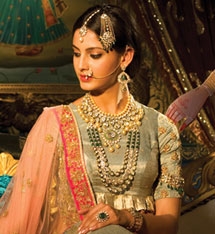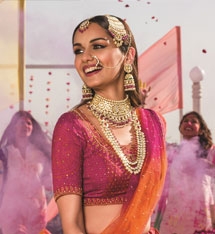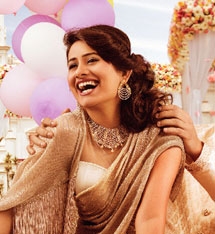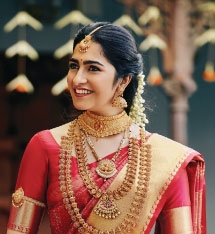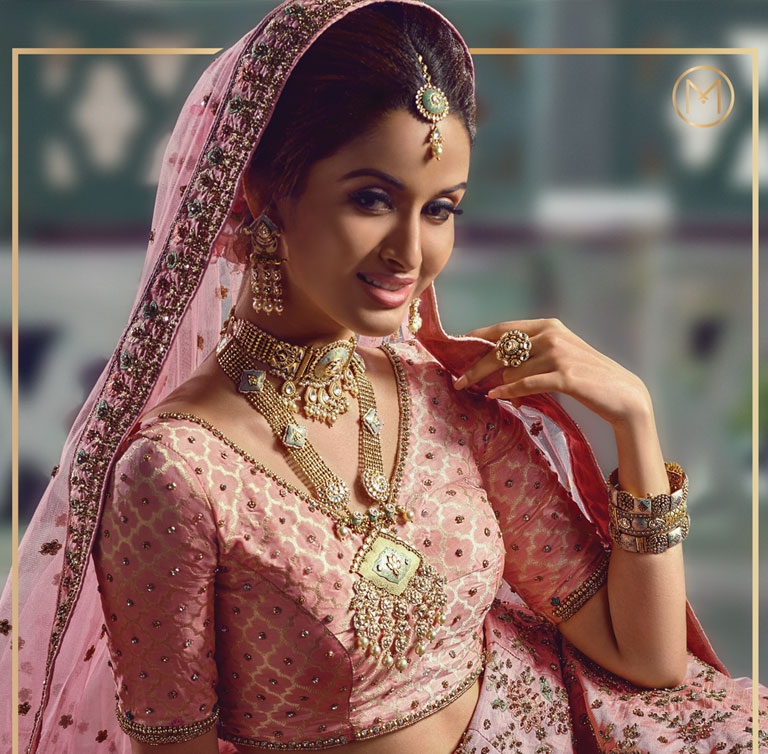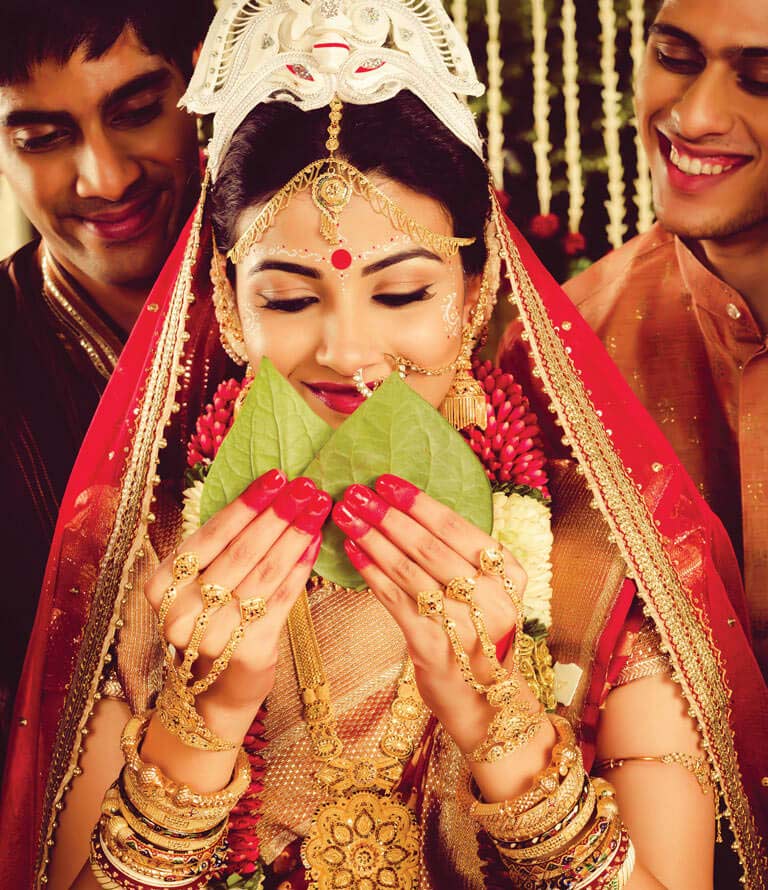-
Home2023 EditionEditionEditionCelebration brideCelebration BrideRoyal bride6Fashion brideFashion Bride
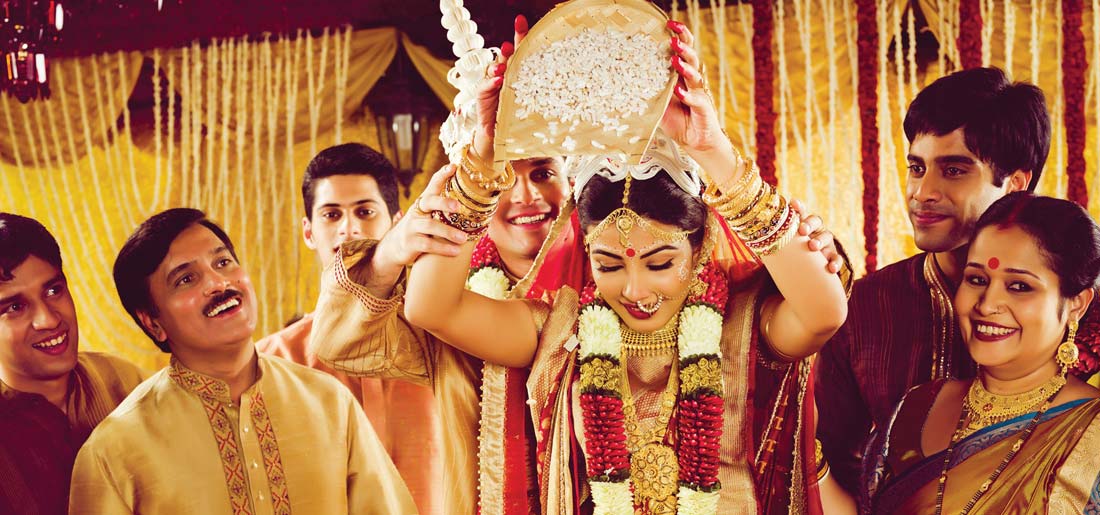
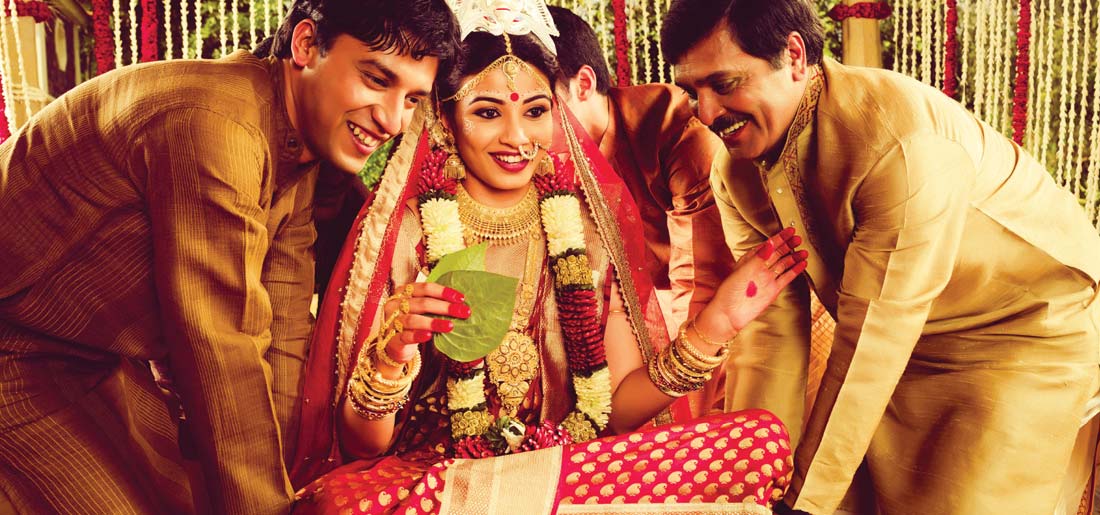
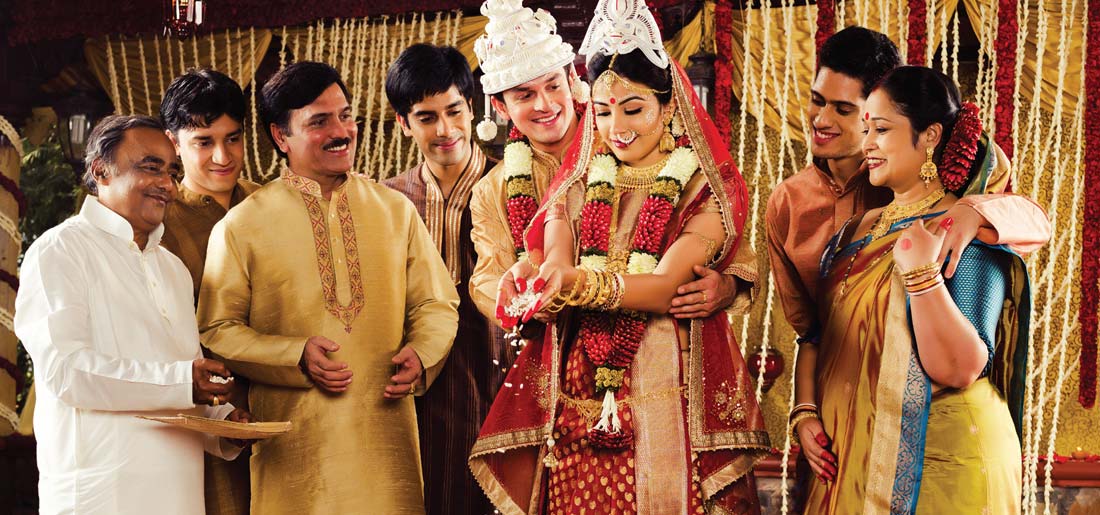
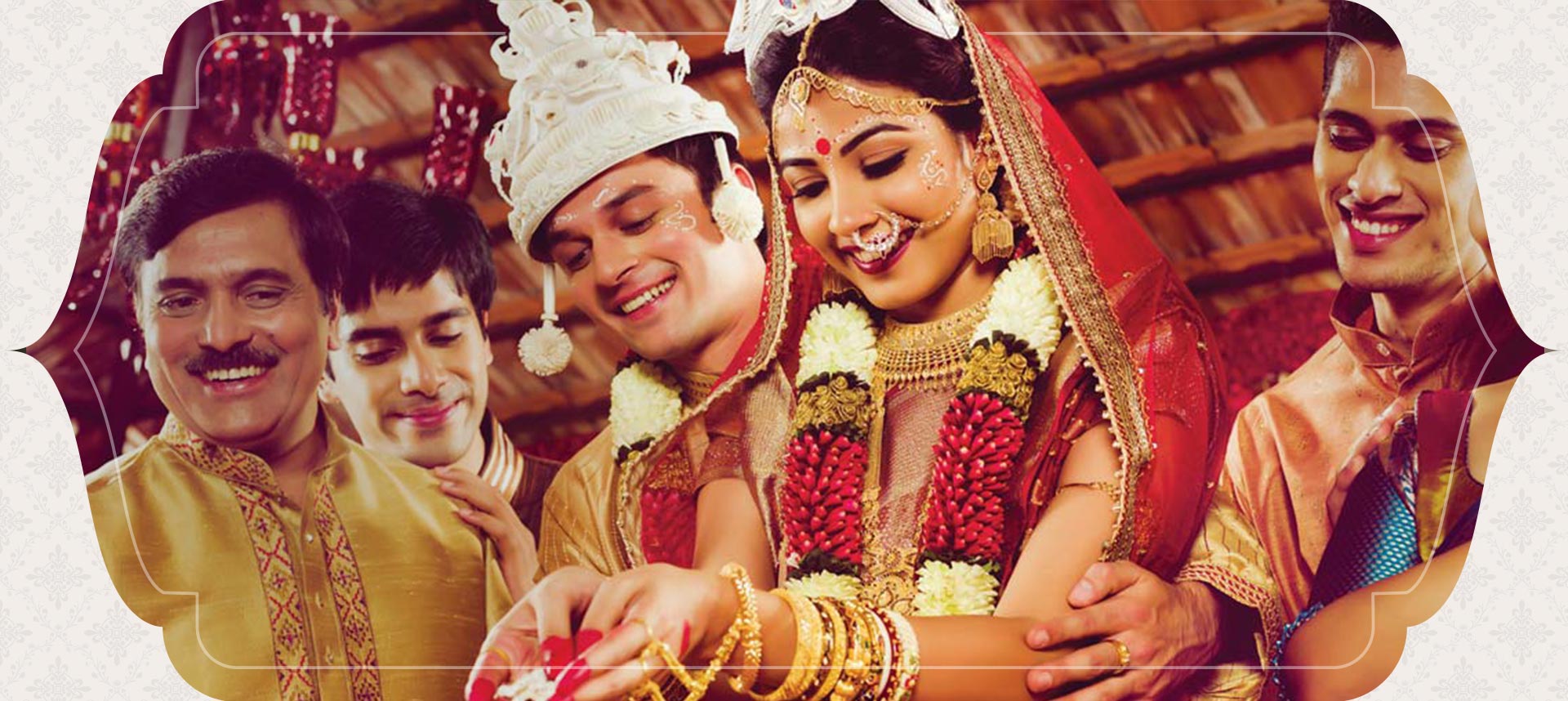

Bengali Brahmin
- HOME
- East Indian Bride
- Bengali Brahmin
BackRituals
Bengali Brahmin Wedding Ceremony
Bengal has a modern outlook on love and relationships, and arranged marriages are just as common as love marriages. The wedding ceremony is a spectacular occasion and is celebrated with a lot of gusto. Homes are decorated, feasts are thrown, and the guests have an incredible time. The music, the food and the people make for an incredible combination, providing the Bengali wedding its characteristic appeal.
The wedding of a Bengali Brahmin follows most Hindu rituals, although it does put its own Bengali twist on it. Upon the arrival of the groom and his family at the location where the wedding ceremony will take place, the family of the bride welcomes them. The groom is escorted to the mandap, or the altar, where the wedding ceremonies will take place. It is here that the groom and the bride will be wed and deemed husband and wife by the priest.
Before the wedding rituals begin. The groom is presented new clothes by a member of the bride’s family. Called the Potto Bastra, this ritual is usually performed by a trusted family member and is considered a gift that the bride’s family makes for the groom.
The exchange of garlands between the bride and groom is the next ritual in a Bengali Brahmin wedding. It is a popular ritual and observed in many cultures. Known as Mala Badal in Bengal, it denotes that both the bride and the groom have accepted each other for marriage and are ready to lead their lives together. A special pedestal type stool is used by the bride to sit on during this ceremony and is known as pidi.
The Mala Badal is followed by the Sampradan, where the bride is officially handed over to the groom by an elder of her family. It is a symbolic gesture that from this moment onwards the bride is a part of the groom’s life and he owes certain responsibilities towards her. The priest then recites some chants from the Vedas and the hands of the bride and groom are tied together using a sacred thread. One end of this thread is placed upon a ceremonial pitcher filled with water, which is known as the Mangal Ghot. The Mangal Ghot is a special pitcher that is prepared in advance and is decorated with mango leaves which surround the mouth of the pitcher and are attached to a single, long twig which has been shaped to form a circle.
A separate site is set up where the Yagna takes place. The bride is brought to the Yagna site on the shoulders of her family members, while seated on a special wooden poyol. A Yagna is a special ceremony involving fire, and is used to invoke the blessings of the god while using the symbolic power of the fire to ensure all future mishaps are burned away and purified. Once the priest has recited the appropriate verses, the bride and groom walk around the fire a total seven times. The saat phere, or Saat Paak, as it is called in Bengal, is a well-known Hindu marriage tradition and symbolizes the union of these souls for the next seven lives. During this ceremony the bride and groom are also asked to make certain promises regarding their relationship. They are made familiar with the responsibilities of marriage, and asked to promise that they will be devoted to each other and forever loyal. The fire of the yagna reinforces these promises and provides religious sanctity to them.
At the conclusion of the Yagna, a ceremony called Anjali is performed. Purified rice, flowers, and other holy objects are placed in the hands of the bride and groom by the brother of the bride. As one, the couple pour it into the fire, and offer their sacrifice to the gods in return for their blessings. The groom then fills the parting in the hair of his bride with vermillion, also known as Sindoor. The sindoor is considered a mark of marriage in the Indian culture and Bengali women in particular make it a point to show off their marital status with sindoor that is displayed prominently on their heads. The bride is given vermillion; a ritual called Sindoor Daan, and is expected to wear sindoor daily for the rest of her life. The sindoor daan finally brings the wedding ceremonies to an end, and depending on the hour, the wedding attendees sometimes retire to their rooms for some rest.
The farewell of the bride from her family is an emotional and heart wrenching moment. Known as Bidaayi, the bride’s family bids her farewell and wishes her all the luck. The groom escorts his bride with him to his car, which is usually decorated with flowers and all kinds of designs. When she has bid her final adieu, he then leaves with her for his home, the home which is also now her home. She leaves behind a teary eyed family, which is happy and sad in equal parts, for she is leaving them forever, but at the same time she is starting her new life with a man who will love her and take care of her.Useful Links Scheme Payment(India only)
Make an Appointment Build your Custom Jewellery Smart Buy Offers New Arrivals Exclusive CollectionCustomer ServiceMalabar Gold & Diamonds
402, Valecha Chambers, Plot No. B-6,
New Link Road, Opp. Infinity Mall,
Andheri (W) ,
Mumbai - 400053. +91 22 62300916 care.in@malabargoldanddiamonds.com







